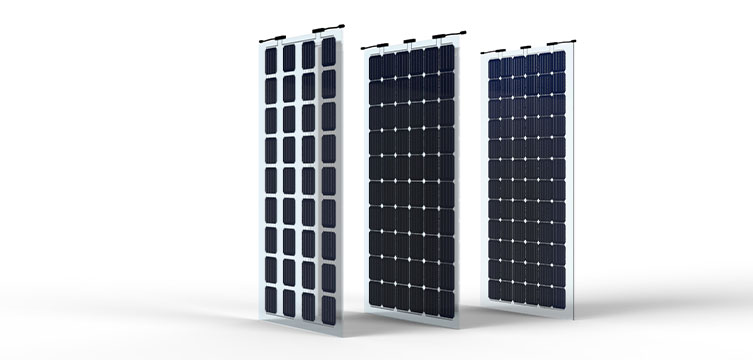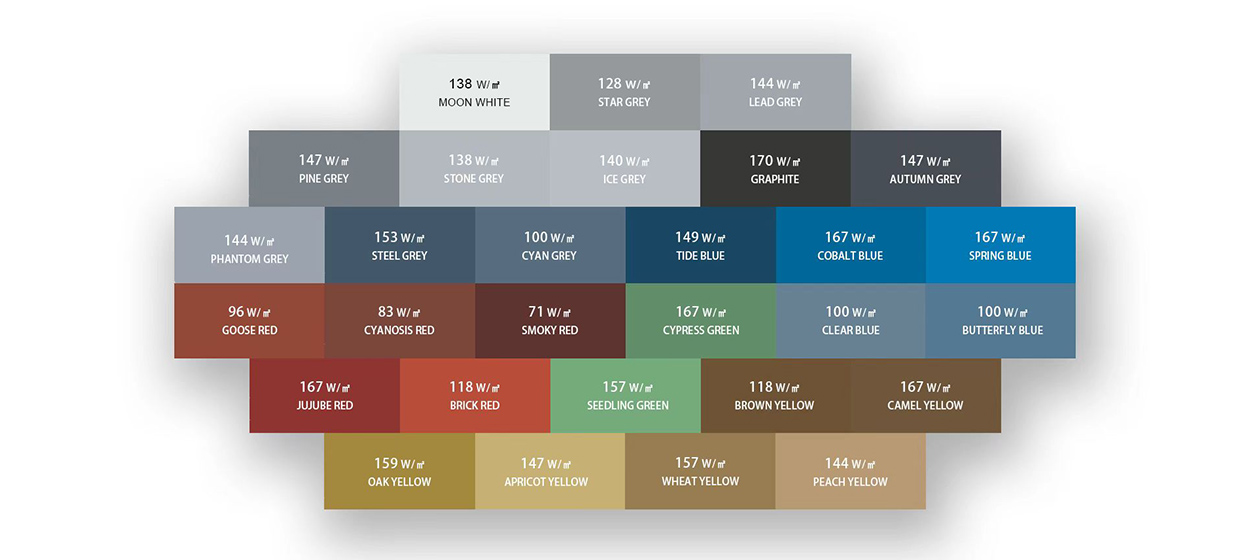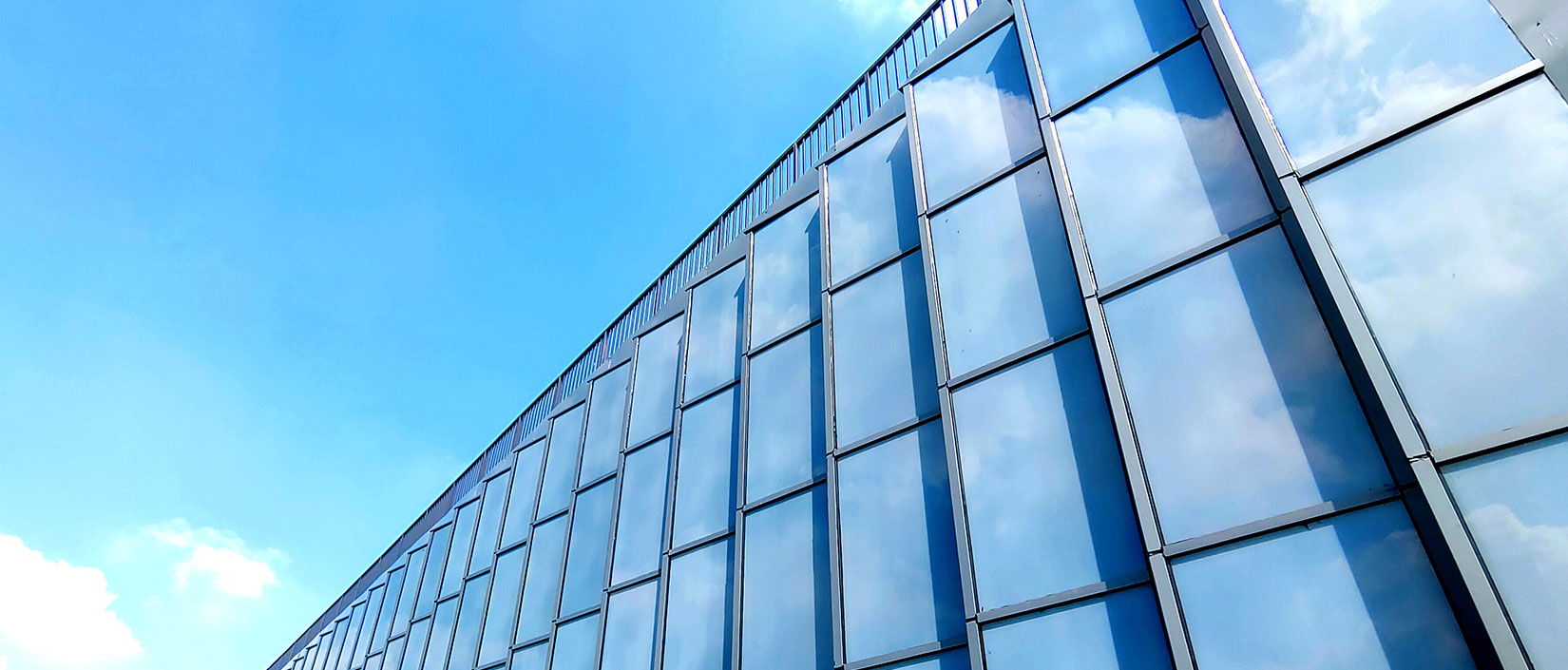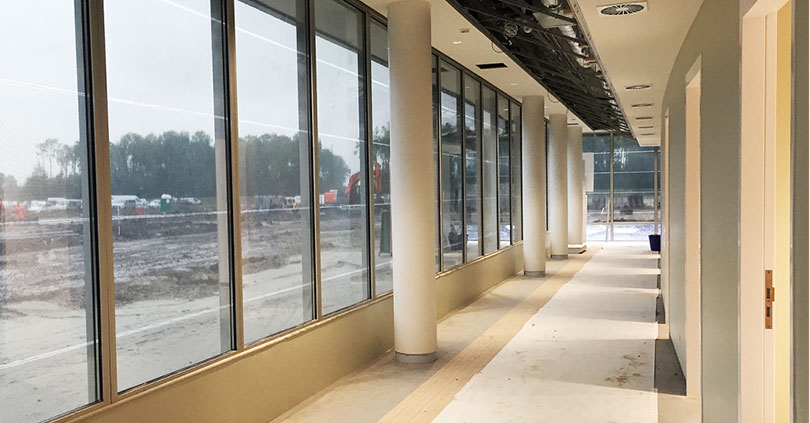As a BIPV manufacturer, we offer Building Integrated Photovoltaic (BIPV) solutions that integrate photovoltaic elements into buildings to form building integrated photovoltaic systems.
Building integrated photovoltaics (BIPV) refers to the integration of photovoltaic modules into buildings, while building integrated photovoltaic (BIPV) systems refer to the integration of pv modules (photovoltaic building materials) into the building envelope, which are used to replace traditional building materials in parts of the building envelope such as roofs, skylights or exterior walls. These pv modules capture sunlight falling on the surface and convert it into electrical energy, which is then used to power homes or feed back into the grid through the BIPV system.Our photovoltaic building materials (BIPV) can completely replace ordinary building tiles in terms of quality and strength, while enabling zero-energy buildings.
BIPV systems can use sunlight to generate electricity to provide electricity for buildings, reducing the building's carbon emissions and electricity costs without compromising the building's safety and aesthetics, and enhancing the building's sense of technology.
Building integrated photovoltaics (BIPV) are increasingly being incorporated into the construction of new buildings as a primary or auxiliary source of electricity, although existing buildings can also be retrofitted with similar technologies.
The advantage of BIPV integrated photovoltaics over more common non-integrated systems is that the initial cost can be offset by reducing the amount spent on building materials and labor that would normally be used to construct the part of the building that the BIPV modules replace. In addition, BIPV allows for more widespread solar adoption when the building's aesthetics matter and traditional rack-mounted solar panels would disrupt the intended look of the building.Gain Solar's BIPV system can be integrated into any technology to provide a customized, durable, beautiful and design-oriented photovoltaic building system.
CRYSTALLINE PV GLASS
BIPV photovoltaic building materials: Crystalline silicon PV glass can easy replace the traditional canopy and skylight applications, spandrel glass, solid walls and guardrails. This means the Crystalline silicon PV glass not only most suitable material for building with same mechanical properties as conventional architectural glass used in contruction for architectural purposes. It can yield much energy as normal solar panels for those buildings and facilities with good solar orientation which seek maximum energy output.
Crystalline silicon photovoltaic glass is an important building material for BIPV. Gain Solar's crystalline silicon photovoltaic glass has a variety of colors and textures, and its appearance can be customized according to the architectural style, and can be seamlessly integrated into the building facade, windows and roof., where designers can incorporate a unique architectural style that allows the building to achieve the goal of generating clean energy while increasing visual appeal.

Characteristic

Nano film colorization technology, bright and long lasting

Construction grade material

Excellent fireproof and waterproof performance

Beautiful and power generation

Heat preservation and insulation

Convenient installation

Same life cycle as buildings
100% Customizable
Dimension
Shape
Conventional facades made of plaster, aluminum, marble or any other material can be harmoniously replaced by Colored BIPV building elements. The patented Nano-film technology can make the appearance of the component permanent, with the same life cycle of buildings. Also could be obtained with more intense color. Any color can be developed to match the design of the project.
Typical performances of modules using our film are shown in the flowing table:

largest BIPV glass panels measure 13.5 feet x 6.5 feet.

Colored BIPV design meets the aesthetic needs of architecture
AMORPHOUS SILICON PV GLASS

Amorphous silicon photovoltaic glass is also one of the choices for photovoltaic building integrated solution building materials.
AMORPHOUS SILICON PV GLASS technology based on amorphous silicon (a-Si) offers a range of attractive features that are ideally suited for building-integrated photovoltaic installations (BIPV). Solar modules may be assembled to customer-specific BIPV elements for roofs and facades, and thus may combine various functions, namely electricity generation, thermal insulation, shading, and even satisfy aspects of architectural design. Compared to CRYSTALLINE PV GLASS technologies, some reduction in power output at elevated temperatures, but with a better light transmittance.
Photovoltaic solutions provided by Gain Solar, photovoltaic glass is 100% customizable and can be applied to glass curtain walls, skylights, building facades, roofs, blinds, sound insulation barriers, etc., ensuring that our BIPV solutions meet architectural aesthetics and energy function requirements.
Essentially, homeowners can integrate BIPV products into their building design anywhere that the sun shines directly on the external surface of the house. Companies operating in the BIPV market are constantly looking for clever ways to seamlessly integrate BIPV products into the building envelope. They can be part of standard building components, such as facades, roofs or windows. Although you can't generate electricity by placing solar panels on the foundations of your home, you can find BIPV products to install almost anywhere there is sunlight.
BIPV products used to be used exclusively on roofs. This characteristic makes sense because our roofs usually receive the most direct solar radiation. most early innovators of BIPV technology focused on replacing traditional roofs with panels, tiles or shingles that generate renewable solar energy while protecting homes from the elements. The impetus for this innovation stems from a simple economic calculation. Assume that the average cost of replacing a roof in the US is between $5,500 and $11,500. In this case, solar panels that double as roofs essentially "subsidise" part of the cost of using solar energy.
Gain solar also manufactures solar roof tiles, which can be adapted to most roof configurations, have a customizable look that blends well with the design of the house, and are easy to install, making them ideal for solarizing buildings on a budget.
Recently, companies have begun to look for ways to integrate solar production into other traditional building elements. Today, homeowners can find BIPV products to "replace" the following building elements.
Attached conservatories
BIPV products are systems that can be used as part of a building skin or envelope while converting solar energy into electricity through dual use. Instead of connecting solar panels to a separate roof or façade, BIPV products can provide weather protection, insulation, noise protection, daylighting and even improved security, as well as independent, clean renewable energy for your home
Given these environmental factors, many homeowners considering BIPV systems ask: will these systems produce almost as much energy as standard solar panels? In the case of solar roofs or solar tiles, the answer is yes. Solar panels allow the installer to tilt the individual panels in the best direction to capture more sunlight. In contrast, solar tiles usually cover the entire roof area, thus compensating for this small difference in inefficiency. In many cases, roofs covered with solar tiles or other types of BIPV roofs should be able to provide the electricity needed for efficient homes to achieve net-zero energy use.
Other BIPV products such as solar facades and windows may be less efficient than solar panels due to the correct orientation. However, this will vary on a case-by-case basis. If the orientation of your roof is not ideal, the south-facing elevation of your home may be the best location to capture solar radiation.
In terms of power generation efficiency, the situation is not so straightforward with BIPV systems. Darker BIPV panels, such as those used for solar tiles or other types of solar roofing, usually have an efficiency rating comparable to that of regular solar panels. However, the efficiency of transparent or translucent BIPV panels used on windows, skylights and other similar surfaces is still significantly lower. Because these transparent BIPV products allow some solar radiation to pass through, the total power generation efficiency may be only 50% to 75% of that of a normal solar panel.
The main attraction of BIPV products is twofold; BIPV systems add space in and around the home and you can convert the solar radiation into usable energy for your home. More important is the economic factor, as BIPV products have a dual function. They provide renewable energy, while also protecting the home and reducing the cost of autonomous solar power for the homeowner.
By using solar tiles instead of asphalt panels, homeowners can essentially 'discount' the price of their roof from their solar installation. The same 'discount' can also be applied to skylights, railings and other areas where manufacturers can design BIPV systems.
Another additional economic benefit of some BIPV systems is that they may be more durable than the building systems/elements they replace. For example, the average lifespan of most asphalt shingle roofs is 15 years. In contrast, most solar shingles will last 25-30 years, with only a small drop in efficiency at the end of that life. The total economic savings associated with a BIPV roof should therefore take into account the cost of both roof installations. You can apply the same principle to solar facades and other BIPV systems.
For the time being, BIPV systems are still slightly more expensive than conventional solar panels. They are also less efficient in converting solar radiation into usable energy for the home. However, as innovation in the BIPV sector continues to advance, homeowners should expect to see cost-effective and efficient renewable energy solutions that can be integrated directly into the building components of their homes.
Several different companies are developing building integrated PV products and systems. Gain Solar is a pioneer in solar tiles in China, so if you need BIPV products, consider Gain Solar! We offer a range of BIPV (building integrated photovoltaic) solar panels that can be perfectly integrated into buildings, facades, canopies, balconies, windows, car parks, roofs and more. Our solar BIPV panels are available in different shades, transparency, sizes, thicknesses and more.
Our BIPV systems have been helping many of our customers achieve green building certification in several countries/regions. These wins continue to give us insight into emerging building trends and requirements, giving us the opportunity to innovate and build custom solutions to meet our customers and their site-specific requirements. Choose us, choose green living!